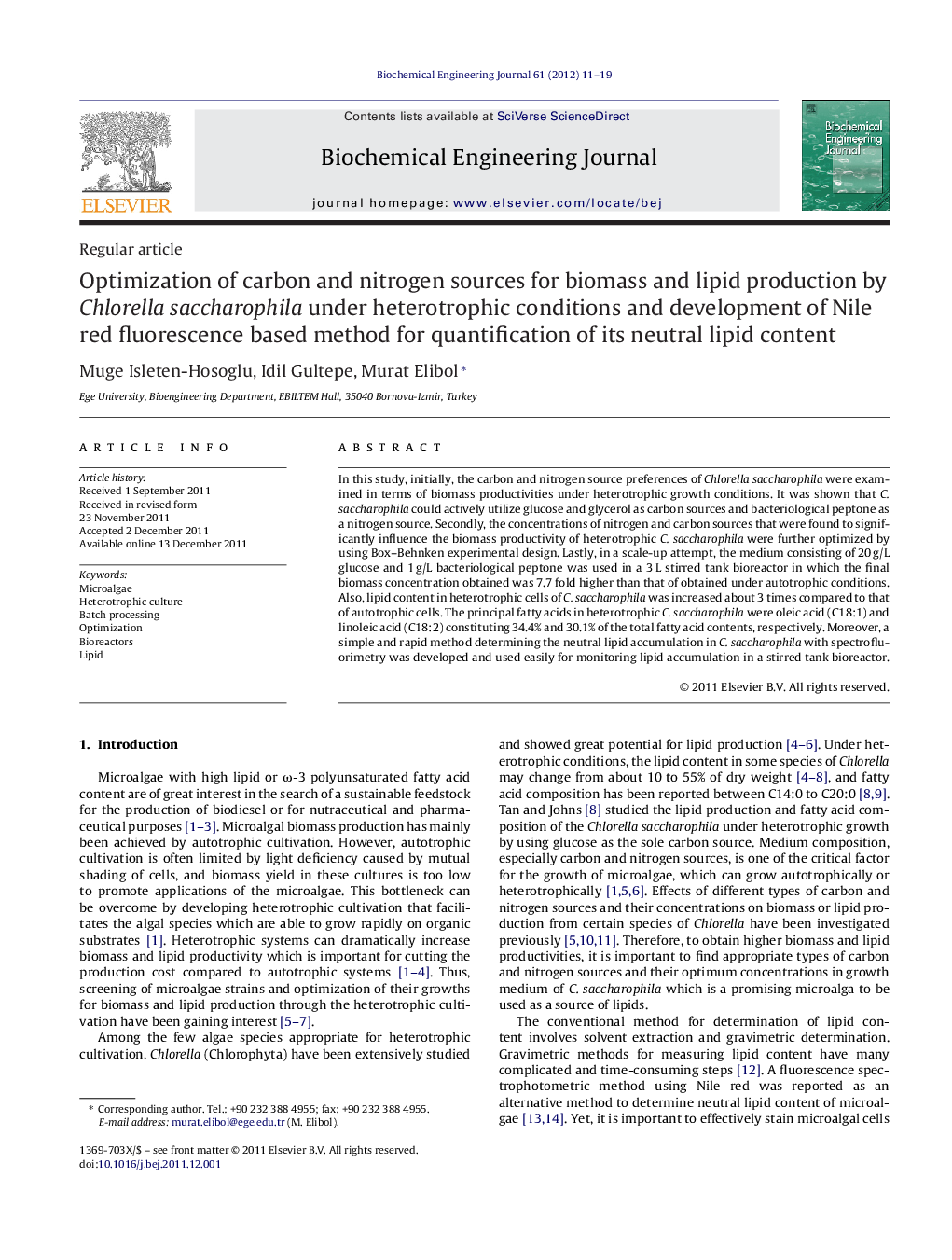| Article ID | Journal | Published Year | Pages | File Type |
|---|---|---|---|---|
| 3577 | Biochemical Engineering Journal | 2012 | 9 Pages |
In this study, initially, the carbon and nitrogen source preferences of Chlorella saccharophila were examined in terms of biomass productivities under heterotrophic growth conditions. It was shown that C. saccharophila could actively utilize glucose and glycerol as carbon sources and bacteriological peptone as a nitrogen source. Secondly, the concentrations of nitrogen and carbon sources that were found to significantly influence the biomass productivity of heterotrophic C. saccharophila were further optimized by using Box–Behnken experimental design. Lastly, in a scale-up attempt, the medium consisting of 20 g/L glucose and 1 g/L bacteriological peptone was used in a 3 L stirred tank bioreactor in which the final biomass concentration obtained was 7.7 fold higher than that of obtained under autotrophic conditions. Also, lipid content in heterotrophic cells of C. saccharophila was increased about 3 times compared to that of autotrophic cells. The principal fatty acids in heterotrophic C. saccharophila were oleic acid (C18:1) and linoleic acid (C18:2) constituting 34.4% and 30.1% of the total fatty acid contents, respectively. Moreover, a simple and rapid method determining the neutral lipid accumulation in C. saccharophila with spectrofluorimetry was developed and used easily for monitoring lipid accumulation in a stirred tank bioreactor.
► We study growth, lipid and fatty acid composition of Chlorella saccharophila. ► Higher lipid content has been obtained under heterotrophic cultivation. ► We develop Nile red fluorescence spectrophotometric method. ► The principal fatty acids are oleic and linoleic acids.
